Ukraine inflicts major operational defeat on Russia, ISW report says
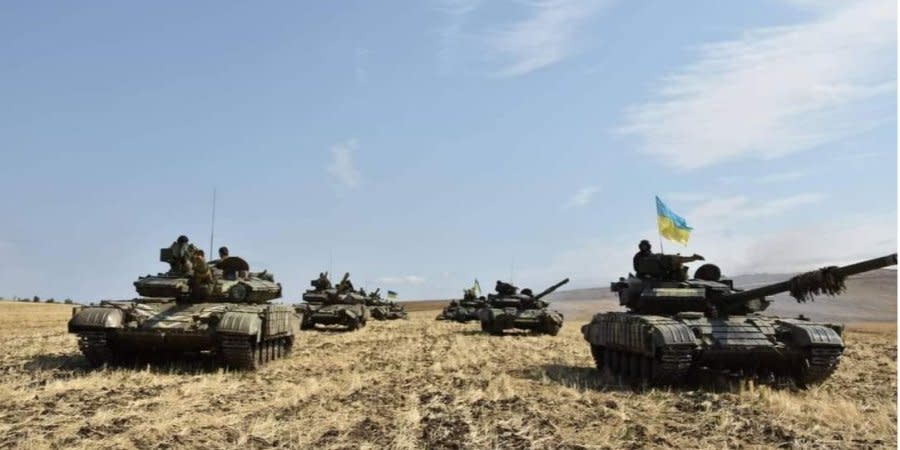
Read also: Amid Ukraine’s effective counter-offensive, Russia’s FM Lavrov proposes negotiations with Kyiv
While the operation won’t bring an immediate end to the war, it has turned the tide of the conflict, the report says.
The Ukrainian success resulted from skillful campaign design and execution that included efforts to maximize the impact of Western weapons systems such as HIMARS (U.S.-made rocket artillery). Kyiv’s long discussion and then an announcement of a counter-offensive operation aimed at Kherson Oblast drew substantial Russian troops away from the sectors on which Ukrainian forces have conducted decisive attacks in the past several days.
Read also: Russia loses 350 troops in one day, Ukraine says
Ukraine’s armed forces employed HIMARS and other Western systems to attack Russian ground lines of communication (GLOCs) in Kharkiv and Kherson oblasts, setting conditions for the success of this operation, ISW analysts believe.
The Ukrainian recapture of the town of Izyum, formerly one of Russia’s main logistical hubs in the region, ended the prospect that Russia could accomplish its stated objectives in Donetsk Oblast. After retreating from Kyiv in early April, the stated Russian objectives had been to seize the complete territory of Luhansk and Donetsk oblasts. The Russian campaign to achieve these objectives was an attack along an arc from Izyum through Severodonetsk to the area near Donetsk. That attack aimed to seize Severodonetsk, Lysychansk, Slovyansk, Bakhmut, and Kramatorsk, and continue to the western boundary of Donetsk Oblast.
Read also: Videos show Ukrainian military storming Russian-occupied village in Kharkiv Oblast
Russian forces managed to take Severodonetsk on June 24 and Lysychansk on July 3 after a long and extremely costly campaign but then largely culminated, seizing no major settlements and little territory. The Russian position around Izyum still threatened Ukrainian defenders of Slovyansk, however, and retained for the Russians the opportunity to return to the attack on the northern areas of Donetsk Oblast.
The loss of Izyum dooms the initial Russian campaign plan for this phase of the war and ensures that Russian advances toward Bakhmut or around Donetsk cannot be decisive – if they occur at all. Even the Russian seizure of Bakhmut is now unlikely, as Russia’s effective combat power is now extremely limited.
There is no basis for assessing that the counter-offensive announced in Kherson Oblast is merely a feint, however. Ukrainian forces have reportedly attacked and made gains at several important locations on the western bank of the Dnipro River. Ukraine has committed considerable combat power and focused a significant portion of the Western-supplied long-range precision systems it has to this axis, and it is not likely to have done so merely to draw Russian forces to the area.
The Ukrainian pressure in Kherson, combined with the rapid counter-offensive in Kharkiv, presents the Russians with a complicated dilemma, the ISW explains, adding that normally, the strategy would be to pull from other sectors of the conflict to establish defensive lines further east than the Oskil River (Kharkiv Oblast) to ensure that Russia can hold the Luhansk Oblast border or a line as close to that border as possible. But Russian troops around Bakhmut and near Donetsk continue offensive operations, as if no threat to Luhansk exists.
Read also: About the death of Putin and his entire system
Russian dictator Vladimir Putin risks making a common but deadly mistake by waiting too long to order reinforcements to the Luhansk line, thereby compromising the defense of Kherson or ending offensive operations around Bakhmut and Donetsk without getting troops into position to defend against continuing Ukrainian attacks in Luhansk in time. The Ukrainian campaign appears intended to present Putin with precisely such a dilemma and to benefit from almost any decision he makes.
However, the current counter-offensive will not end the war, the ISW notes. The campaign in northeast Ukraine will eventually culminate, allowing the Russians to re-establish a tenable defensive line and possibly even conduct localized counterattacks, analysts believe – though other experts have suggested that Russian military power may be too degraded to effectively regain any lost territory.
Ukraine will have to launch subsequent counter-offensive operations, likely several, to finish the liberation of Russian-occupied territory. The war remains likely to stretch into 2023.
Read also: Russians fleeing village 5 km from Russian border in Kharkiv Oblast, say local authorities
Nevertheless, Ukraine has turned the tide of this war in its favor, the ISW writes. Kyiv will likely increasingly dictate the location and nature of the major fighting, and Russia will find itself increasingly responding inadequately to growing Ukrainian physical and psychological pressure in successive military campaigns unless Moscow finds some way to regain the initiative.
The defeat in Kharkiv Oblast is also straining the relationship between the Kremlin and Russian Defense Ministry, according in part to recent statements by Ukrainian intelligence, further alienating Putin from the higher military command. Kremlin Spokesperson Dmitry Peskov stated that Putin has postponed all his meetings with the leadership of the Russian Defense Ministry and representatives of the Russian defense industry in Sochi—a bizarre decision in the face of the military operational and defense industrial crisis facing Russia, ISW analysts say. The Russian defeat in the Battle of Kharkiv Oblast will only intensify public criticism of Russian Defense Ministry Sergey Shoigu and his ministry, which may lead to personnel changes.
Read also: Kherson journalist on Antonivskiy Bridge and situation in region – interview
Other key takeaways of the report:
Russian military bloggers have defined the Oskil River that runs from Kupyansk to Izyum as the new frontline following Russian withdrawal from positions in eastern Kharkiv Oblast;
Ukrainian forces have advanced into Vovchansk and Velykyi Burluk, just south of the Russian border;
Ukrainian forces continue to fight positional battles and conduct strikes on Russian military, logistics, and transportation assets in southern Ukraine;
Russian forces conducted limited ground attacks in the Avdiivka and Bakhmut areas;
Russian authorities are continuing to pull combat power from various external sources to support operations in Ukraine and are struggling to compensate volunteers;
The success of recent Ukrainian counteroffensives likely contributed to the Russian announcement that annexation referenda will be indefinitely postponed.
Russia's war against Ukraine: map of hostilities
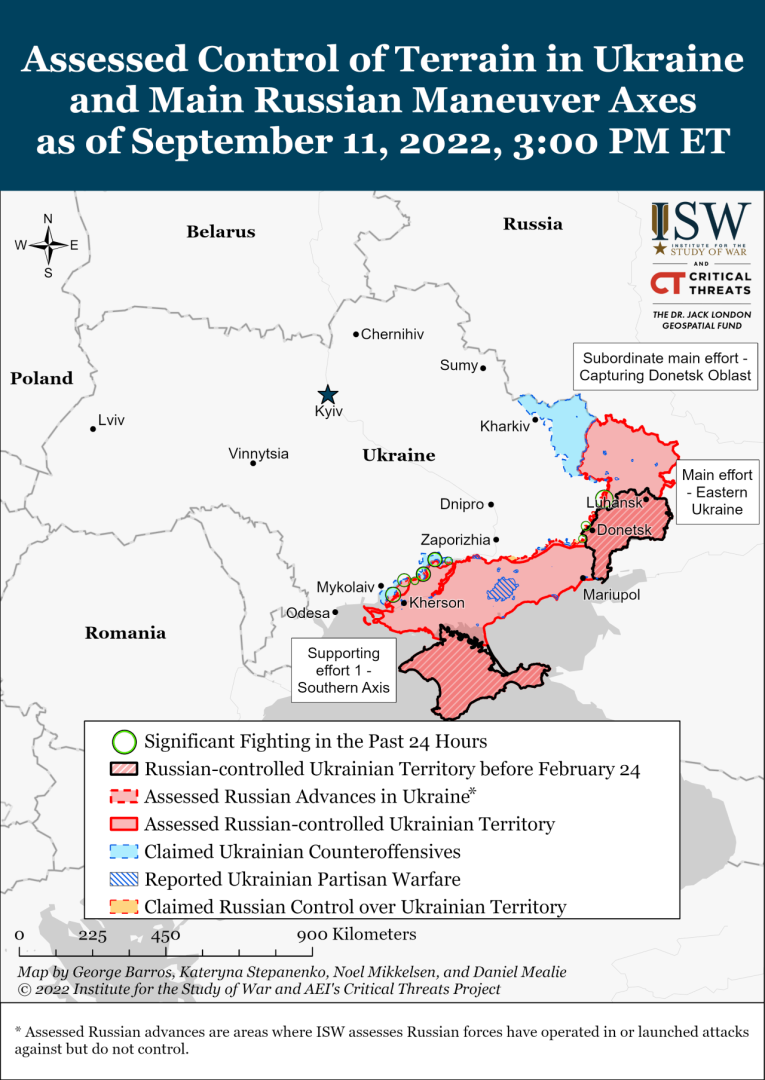
Battles and offensive in the Kharkiv Oblast (Balaklia, Kupyansk, Izyum districts): map of combat operations
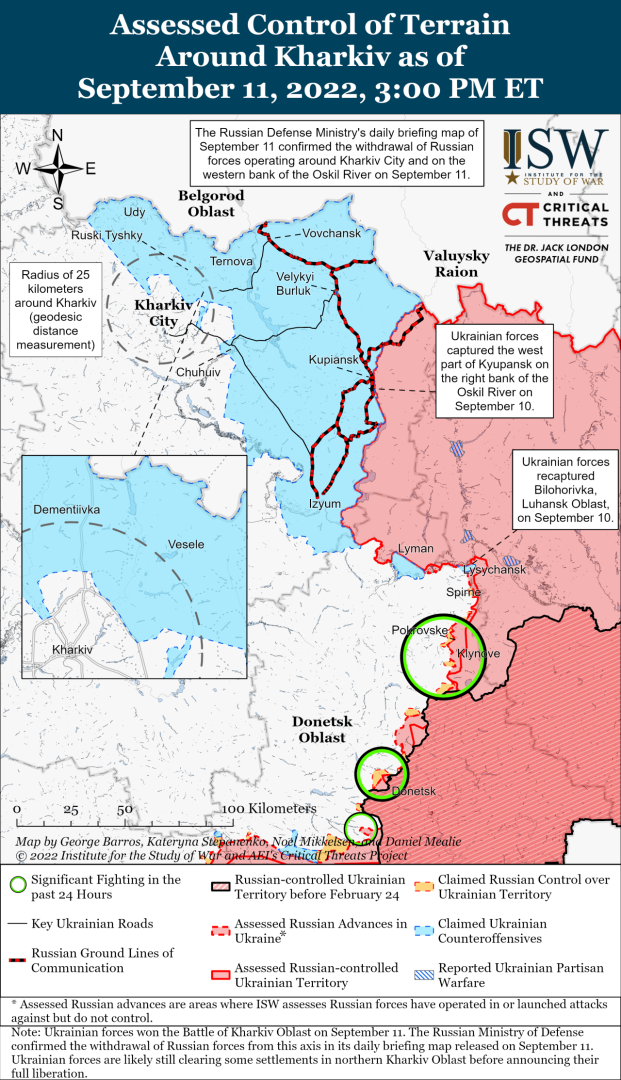
Battles and offensive of the Armed Forces of Ukraine in the south of Ukraine: map of combat operations (Kherson Oblast)
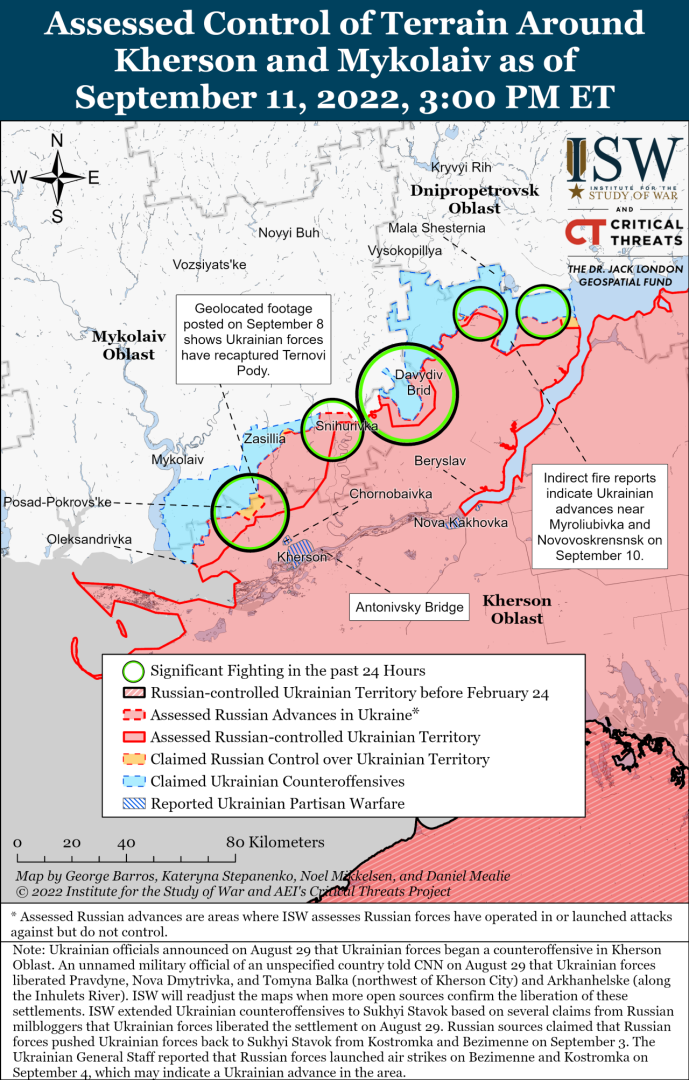
Battles in Donbas: map
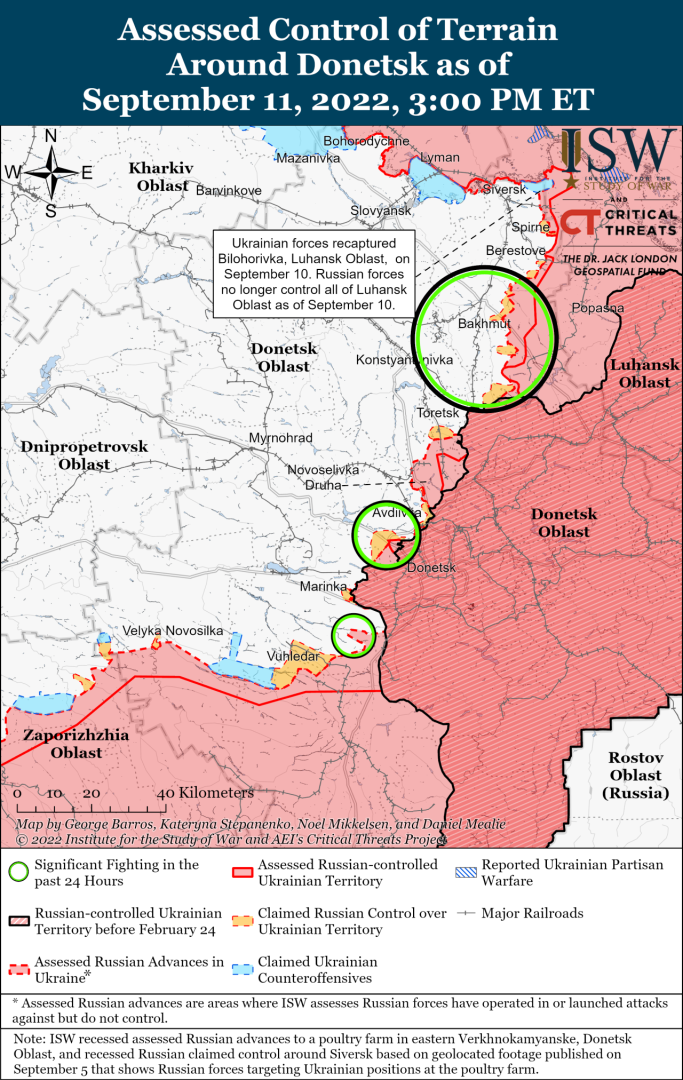
Read the original article on The New Voice of Ukraine

